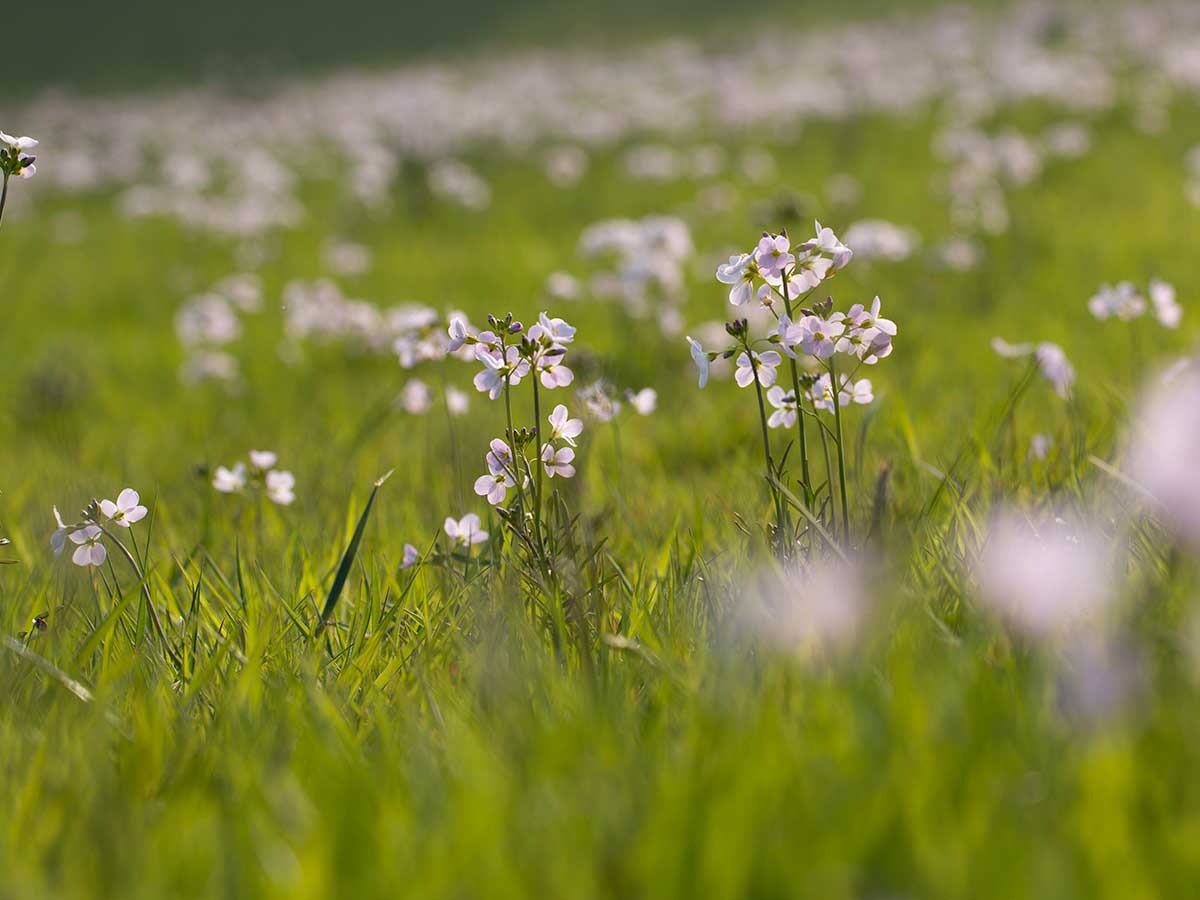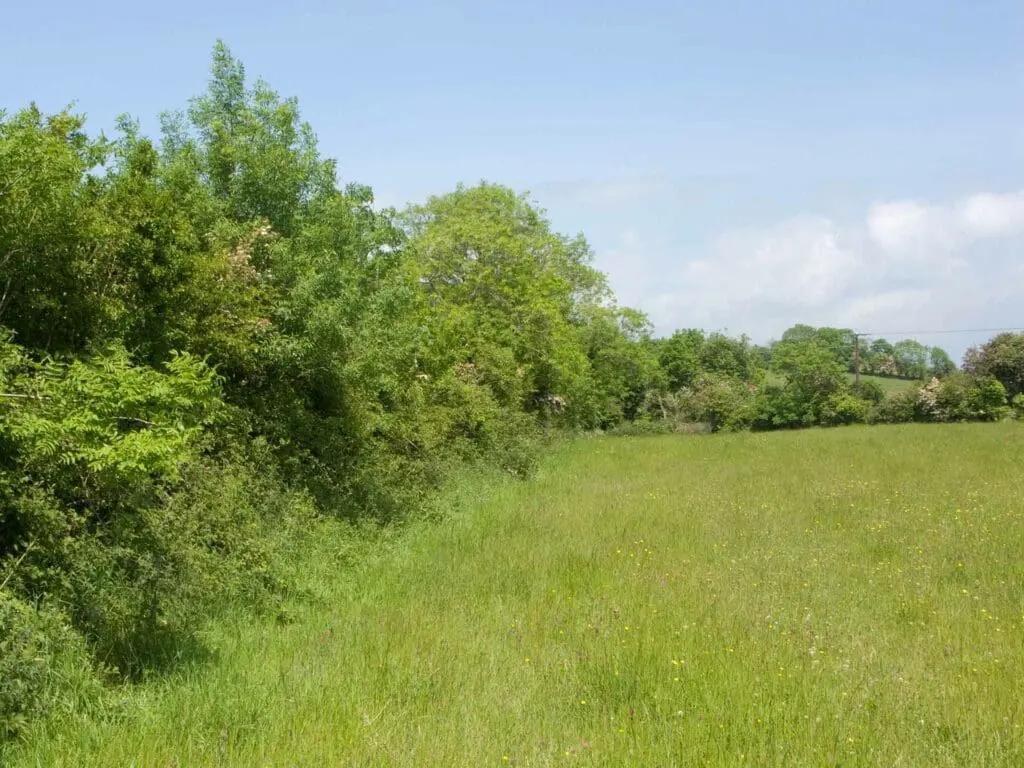Our tendency to drain large areas of land for agriculture and housing means we have lost many of our natural wetlands. This has contributed to erosion, loss of habitat and flooding.
When creating a garden that attracts wildlife, you need a diversity of habitats. An area of wet grassland can help transform your garden into a wildlife paradise.
This article aims to give you enough information to recreate a small area of wet, species-rich grassland or wet meadow.
With a little patience and time, you will soon be able to enjoy the pleasures of having your very own small patch of wet grassland. By using an existing damp area or simply creating one and adding native plants, you will attract many local insect and animal species.
Creating a wet grassland
A wet grassland does not, like a swamp, marsh or pond have standing water, except for during a few brief periods of the year. However, the soil in wet grassland is very damp and ‘squishy’, commonly compared to a soaked sponge.
The first step in creating the wet grassland, is to find a location that will provide the correct levels of sunlight and moisture.
If you’re lucky, the easiest way to do this is to take advantage of an already wet and sunny area in your garden. This could be a muddy area, a pond edge or an overflow. However, if none of these exists, there are things you can do to help retain water.
An artificial wet area
The steps needed to artificially create a small wet grassland area are similar to those used for creating a pond. Its subsequent establishment and management would be similar to a perennial, wildflower meadow.
The shape should be irregular; a square or rectangle would not look natural.
Use a length of hose or thick rope laid on the ground to envisage the shape. The width of the area should be at least 2m wide. When you are happy with the shape, it is time to dig your hole.
Ideally, you’d dig a saucer-shaped hole sloping to a maximum depth of 45-60cm. Creating a smaller, shallower area could result in the soil drying out.
Cover the bottom and sides of your area with approximately 5cm of sand and line the inside with a pond liner or polythene sheet.
Unlike, pond creation, where every care is taken not to pierce the pond liner at all, it is important to pierce the liner – particularly near the top – to allow excess water to escape; this may sound like a contradiction in terms but too much water can be as disastrous as too little. Err on the side of caution; it is possible to add more holes later, although it’s much easier not to!
Prepare the soil you’ve removed when digging the hole by breaking up any large lumps and remove large stones and root fragments. Sift some soil over the pond liner to a depth of 5cm and fill in the rest of the depression with your soil.
Prepare the surface, as you would for a perennial meadow by raking the surface to create a fine tilth. Take care to ensure that your new wet grassland is level with the surrounding area.
There’s no need to fill the hole with water. It’s much better to allow the rain to fill it up slowly. Ultimately it should be perceptibly wetter than the surrounding area. If the area is too wet, i.e. too much water is being retained, stick a garden fork through the soil and pierce the liner some more.
Leave the soil untouched for a few weeks, to ensure that dormant weed seeds have an opportunity to germinate in your area and can be removed before planting or sowing. Now is the time to keep an eye on moisture levels and adjust your drainage accordingly.
Plants for your wet grassland
The reason why the location of your wet grassland is important is that many grassland plants, adapted to high moisture conditions, require full sun for at least part of the day.
The soil for your grassland should be quite low in nutrients so you should never add fertiliser. A rich soil will allow grasses to become dominant and out-compete the slower-growing wildflowers. Newly replanted wetlands are very vulnerable to attacks from unwanted plants which may spread and take over the area. The best way to keep these out of your wet grassland is to pull them out by hand, including the roots, as they attempt to colonize.
A few recommended perennial flowers
The plant species you select will be dependent upon the length of time the soil will be saturated or covered with water, depth of the water, the amount of sunlight on the site, the local climate, soil pH and size of the wetland.
- Meadowsweet – (flowering season: June/September)
- Cuckooflower – (flowering season: April/June)
- Self-heal – (flowering season: June/November)
- Ragged-Robin – (flowering season: May/June)
- Meadow buttercup – (flowering season: April/June)
- Marsh bird’s foot trefoil – (flowering season: June/August)
- Yellow flag – (flowering season: May/July)
- Marsh Marigold – (flowering season: March/June)
- Purple Loosestrife – (flowering season: June/August)
A few recommended grasses
Many grasses suitable for a wet grassland are quite large, such as Reed Canary Grass (Phalaris arundinacea), others will form large tussocks and shade out the wildflowers that you want to encourage, so avoid such species. For the purpose of this article which is only dealing with creating a small, wet grassland we suggest:
- Common Bent
- Red Fescue
- Crested Dog’s tail
- Sweet Vernal Grass
In addition, sedges and Soft, Sharp-Flowered or Jointed Rush should be included. With proper management, such species may colonise after a number of years, as will a range of interesting mosses and you may even be lucky enough to find some liverworts growing.
Before sowing or planting your wildflowers you need to make sure that the soil is moist. If it isn’t, water well with rainwater and sow the seeds or plant the following day. Use the method for perennial meadow creation.
Manage your wet grassland
The ultimate success of your wet grassland will depend on its management. Principally, management will be very similar to the perennial meadow, described here. It is important that the wet grassland is kept moist during dry periods. Ideally, additional water should come from stored rainwater.
It may take up to three to four years before your wet grassland finds some sort of equilibrium. Once it has become established, you will be rewarded with the joys of a low maintenance area of beauty as well as helping biodiversity.




